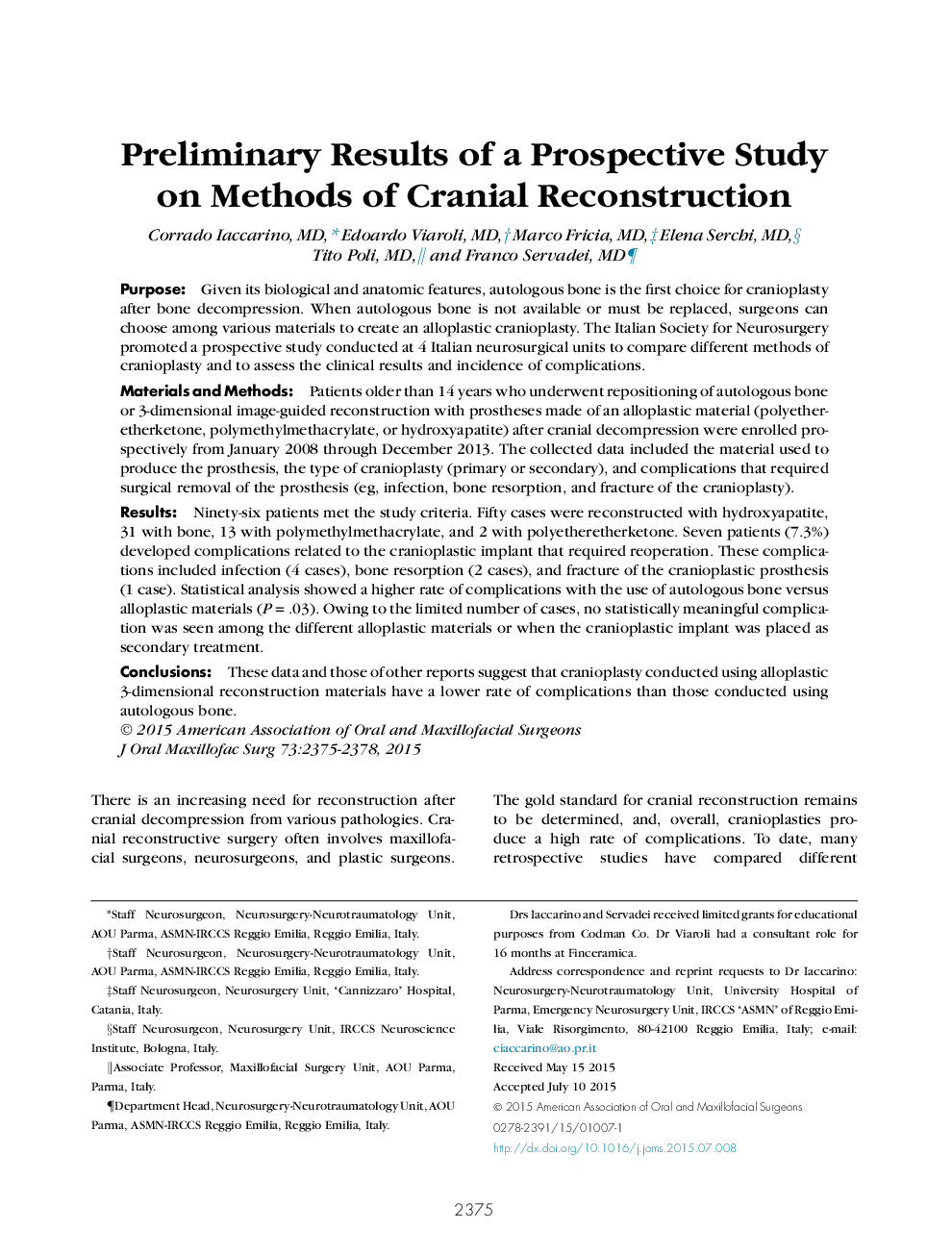| کد مقاله | کد نشریه | سال انتشار | مقاله انگلیسی | نسخه تمام متن |
|---|---|---|---|---|
| 3153009 | 1198021 | 2015 | 4 صفحه PDF | دانلود رایگان |
PurposeGiven its biological and anatomic features, autologous bone is the first choice for cranioplasty after bone decompression. When autologous bone is not available or must be replaced, surgeons can choose among various materials to create an alloplastic cranioplasty. The Italian Society for Neurosurgery promoted a prospective study conducted at 4 Italian neurosurgical units to compare different methods of cranioplasty and to assess the clinical results and incidence of complications.Materials and MethodsPatients older than 14 years who underwent repositioning of autologous bone or 3-dimensional image-guided reconstruction with prostheses made of an alloplastic material (polyetheretherketone, polymethylmethacrylate, or hydroxyapatite) after cranial decompression were enrolled prospectively from January 2008 through December 2013. The collected data included the material used to produce the prosthesis, the type of cranioplasty (primary or secondary), and complications that required surgical removal of the prosthesis (eg, infection, bone resorption, and fracture of the cranioplasty).ResultsNinety-six patients met the study criteria. Fifty cases were reconstructed with hydroxyapatite, 31 with bone, 13 with polymethylmethacrylate, and 2 with polyetheretherketone. Seven patients (7.3%) developed complications related to the cranioplastic implant that required reoperation. These complications included infection (4 cases), bone resorption (2 cases), and fracture of the cranioplastic prosthesis (1 case). Statistical analysis showed a higher rate of complications with the use of autologous bone versus alloplastic materials (P = .03). Owing to the limited number of cases, no statistically meaningful complication was seen among the different alloplastic materials or when the cranioplastic implant was placed as secondary treatment.ConclusionsThese data and those of other reports suggest that cranioplasty conducted using alloplastic 3-dimensional reconstruction materials have a lower rate of complications than those conducted using autologous bone.
Journal: Journal of Oral and Maxillofacial Surgery - Volume 73, Issue 12, December 2015, Pages 2375–2378
